|
|
Period:
First World War
Region:
Ceska
Austro-Hungarian camp in Braunau
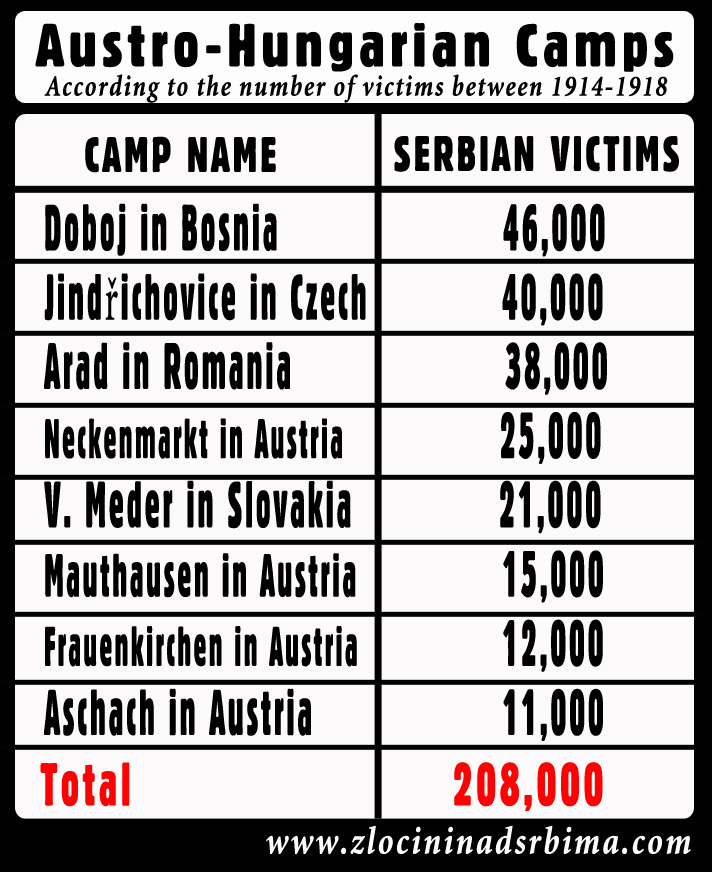 Braunau camp (Germ. Braunau, Cze. Broumov) was one of many concentration camps established in the territory of Austro-Hungarian Empire, during the WW1, as per the Imperial Court orders in Vienna, with the intention of incarceration of Serbs (both military and civilian). Braunau camp (Germ. Braunau, Cze. Broumov) was one of many concentration camps established in the territory of Austro-Hungarian Empire, during the WW1, as per the Imperial Court orders in Vienna, with the intention of incarceration of Serbs (both military and civilian).
The official name of this camp was "Imperial and Royal Prisoner of War Camp Braunau" ("Kaiserliches und Königliches Kriegsgefangenenlager Braunau"). Besides the Serbs, interned were several hundred Russians (Imperial Russia Army soldiers).
According to the information available so far, the total number of interns in this camp was approximately 35,000 and almost all were of Serbian origin. At least 2,674 Serbs had left their remains here due to starvation, disease, corporal punishments, etc. The prison conditions were atrocious.
Camp Braunau or "Raunau" as it was also called, was located in the northern part of today's Czech Republic, in the Náchod District, some 175 km North-East from Prague.
This camp was part of the genocidal plan to exterminate Serbs, placed in action by the Habsburgs through the war on Serbia in 1914. At least 200,000 Serbs had been interned through these death camps, during the four years of WW1. The interns were of both genders and of all age groups. The latest research however, showcases that the above mentioned numbers were much higher.
Once the First world war ended, the remains of Serb interns from Braunau camp were moved to the crypt of the Jindřichovice camp, located in the Karlovy Vary area, in the North-West part of Check Republic.
|
FIRST WORLD WAR 1914-1918 |
|
Battles of: Cer, Drina, Kolubara, Leget, Cemerno, Mojkovac, Kajmakcalan, Gornicevo, Dobro Polje
Camps: Mauthausen, Arad, Jindrihovice, Broumov, Boldogasonj, Nadjimer, Nezider, Aschah, Doboj, Sliven
Crimes: Macva, Surdulica, Great Retreat, Sabac
|
BACKGROUND
At the beginning of 1904, the Kingdom of Serbia signed a trade agreement with the USA, France and Russia... and began exporting its products to the overseas countries through the port of Thessaloniki.
This led to a great economic upswing of the Kingdom of Serbia, which annoyed the Vienna Court, which viewed Serbia as a great rival since Serbia had the highest economic growth rate in Europe at the time, and at the same time a large number of Serbs lived in the occupied territories of the Habsburg Monarchy.
Map of south-eastern Europe in November 1913.
The army of the Kingdom of Serbia liberated its enslaved territories (Raska, Kosovo and Metohija and Old Serbia) from the Turks in the First Balkan War, by achieving major victories in the fall of 1912 at the command of Duke Petar Bojovic at Kumanovo, Prilep and Bitola, and as such completely expelled the Ottomans from the Balkans.
And a year later in the summer of 1913 the army of the Kingdom of Serbia protected Vardar Macedonia from the Bulgarians in the Second Balkan War. The Serbian national revolution was thus continued, at the beginning of the 19th century by Karadjordje Petrovic and Milos Obrenovic.
In the summer of 1914, the Austro-Hungarian Monarchy used the Sarajevo assassination, that is, the assassination of Austrian Crown Prince Franz Ferdinand by members of Young Bosnia (Gavrilo Princip, Bogdan Zerajic, etc.) as an excuse to invade the Kingdom of Serbia, thus starting First World War.
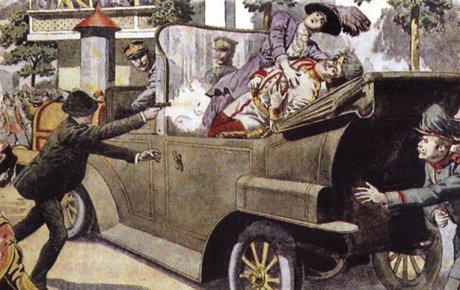
Gavrilo Princip and his comrades in Sarajevo
A dispatch was sent from Vienna, which no sovereign state could accept. Thus, in late July 1914, Austria-Hungary declared war on Serbia. Montenegrin King Nikola I Petrovic and Russian Emperor Nikolai II Romanov immediately sent messages saying that they would help the Serbs. Likewise, German Emperor William II made a military alliance with the Vienna Palace.
CAMP INCEPTION
The order to establish Braunau camp came directly from the Habsburg Monarchy's highest governing echelons (the Imperial Court, the Governments, Parliament), as through the demolition of The Kingdom of Serbia and Serbian people ("Serbien muss sterbien”) the strategic aim of reaching the Bosphorus would have been achieved (Drang nach Osten).
The Braunau camp (situated in Bohemia, the ex-Austrian province), was established in June 11th, 1915. in Královéhradecký of Náchod district, close to the boarder with Poland, when the first interns arrived.
CAMP CONDITIONS
Conditions for the interns were atrocious. The prisoners were divided into several sections, and there was even section especially dedicated to interned children. The Czech winter seasons are long and cold, hence many interns would die of cold weather exposure, as the temperatures would drop to -25C (-13F). Medical care was incufficient at best, worsening the position of interns.
International Committee Of The Red Cross (ICRC) visited Braunau camp on one occasion in 1916. and witnessed many interned children 16 years of age and younger. It is estimated, that some 2,000 children had been incarcerated here. The children did have classes, however it was in German language exclusively and according to the Austro-Hungarian education curriculum.
The Braunau camp interns were forced into heavy labor duties, while the food ratios were scarce. Strict corporal punishment would have been applied in case of any objections.
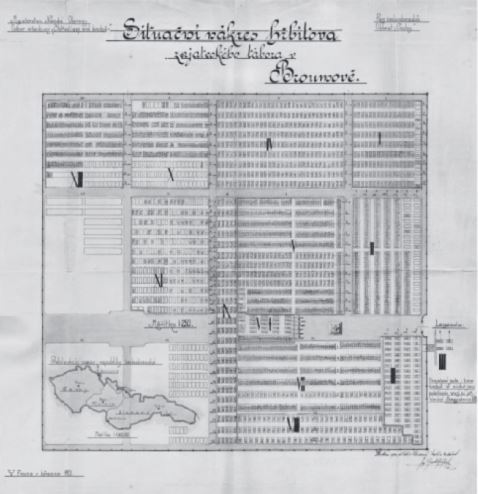
High mortality rate was a daily occurrence, leaving plenty of work for priests and gravediggers. Tens of interns were passing each day in agony.
2,600 Serbs are estimated to have left their remains here. They were usually buried into mass graves in the nearby village of Martínkovice. These mass graves were simply marked, usually with a wooden cross. Rarely the graves were marked substantially better or more respectfully.
CAMP CLOSURE
With the end of the WW1 and Austro-Hungarian Empire's demise, the Braunau camp was closed, at the beginning of November 1918.
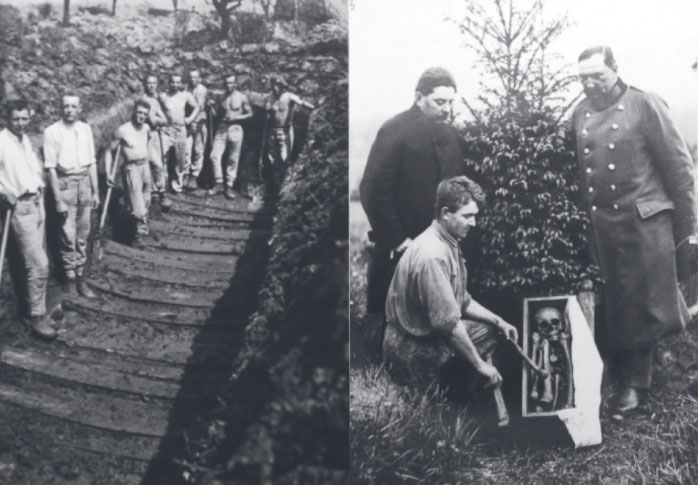
Majority of the remains of Serbian interns from Braunau camp (along 133 Russian interns) were moved in 1927. to the crypt of the ex-Jindřichovice camp, located in the Karlovy Vary area, some 300 km west. Smaller number of the remains could not be exhumed due to the subterranean waters.
YEARS LATER
By 1917. the stone memorial commemorating the Serbian martyrs was already erected in the village of Martínkovice, close by to the ex-camp sight. It is in a shape of a cross laying on a stepped pedestal.
The gray stone contains engraved inscription, while the arms of the cross were decorated with shallow relief. On its southwestern side engraved is the figure of Jesus Christ with crown of thorns, along with the following words:
"RESTING PLACE OF SERB AND RUSSIAN PRISONERS"
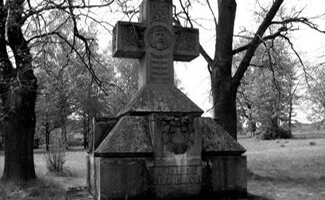
On its northeastern side words: "Rest in Peace to all 1914 - "
These words are in Old Slavic, understandable to Serbian people. The engraving is unfinished, as after the "1914" year there is only a hyphen, as the intention was to add the other year numbers later. Alas, that had never come to fruition. Upon the camp closure, Serbs left in haste to their homeland, whilst the Czech authorities left it be as it was.
The remaining two sides of the monument have been engraved with the message in German language. Nearby the monument, the fragments of the Braunau camp gate still stand.
CULPABILITY FOR THE CRIMES
As the Austro-Hungarian Empire had collapsed, beginning of November 1918., the culpability for the crimes during WW1 over the Serbian populous and their genocidal nature, had never been set in motion.
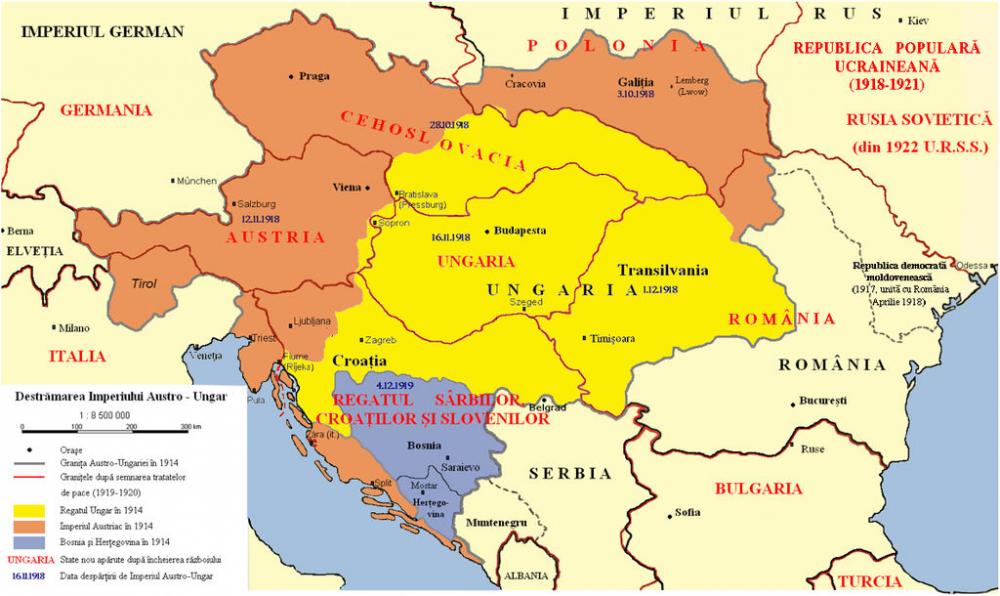
The responsibilities of the defeated side was not even mentioned during the Paris Peace Conference in 1919. The victorious Allies considered the fact that the Austro-Hungarian territory was divided into peaces, to be enough of a punishment.
On the other hand, The Kingdom of Serbs, Croats and Slovenes never made a request to Hungary nor Austria for extradition of war criminals suspected of executing Serbian inmates either in camps or in the Kingdom of Serbia's territory.
Tags:
Please, vote for this article:
Visited: 2943 point
Number of votes: 30
|